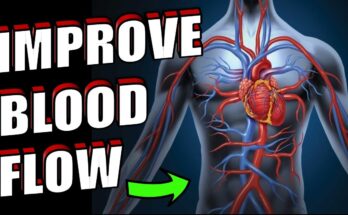Spider Bites Treatment: Spider bites are common globally, with significant medical implications if misdiagnosed.
Accurate diagnosis and effective treatment are crucial to prevent complications and ensure patient safety, making knowledge and awareness essential for healthcare professionals and the public alike.
Understanding Spider Bites
Spider bites can be unsettling and, in rare cases, dangerous. It’s essential to know which spiders are likely to bite and recognize the symptoms to manage them effectively. This guide will help you understand the types of spiders that commonly bite humans and the symptoms that may follow.
Types of Spiders Commonly Involved in Bites
- Black Widow Spider: Easily recognized by the red hourglass shape on its abdomen, the black widow’s bite can be particularly venomous.
- Brown Recluse Spider: Known for its violin-shaped mark on its back, the brown recluse is notorious for its bite, which can cause severe skin damage.
- Hobo Spider: While its bite was once feared for suspected necrotic properties, recent studies suggest it’s less dangerous than previously thought.
- Wolf Spider: Often mistaken for the more dangerous spiders, wolf spider bites are painful but usually harmless.
- Yellow Sac Spider: Frequently found in homes, the yellow sac spider’s bite may cause mild pain and skin irritation.
Symptoms of Spider Bites
The symptoms of spider bites can vary depending on the type of spider and the individual’s reaction to the bite. Common symptoms include:
- Pain and Swelling: Most spider bites cause some form of pain or swelling. The intensity can vary by the toxicity of the spider venom.
- Redness and Itching: A bite may also lead to redness and itching around the affected area.
- Localized Skin Reactions: In the case of brown recluse bites, the area may develop a blister and evolve into a lesion unless treated properly.
- Systemic Symptoms: More severe reactions to bites from venomous spiders like the black widow can include muscle cramps, fever, chills, and nausea.
Recognizing these signs and knowing when to seek medical help is crucial for effective bite management. While most spider bites are harmless and resolve on their own, bites from spiders like the black widow and brown recluse require immediate medical attention.
Immediate Actions after a Spider Bite
When bitten by a spider, it’s crucial to know the immediate actions to take to mitigate the effects and determine when to seek medical attention. Here are the steps to follow and signs that require medical help.
First Aid Steps for Spider Bites
- Clean the Bite: Rinse the spider bite area with lukewarm water and mild soap to clean the wound and prevent infection.
- Apply Cold Compress: To reduce swelling and pain, apply a cold compress or an ice pack wrapped in a cloth to the bitten area for about 10 minutes. Repeat as necessary.
- Elevate the Affected Area: Keep the bitten limb elevated to help reduce inflammation and discomfort.
- Take Over-the-Counter Pain Relievers: If necessary, use over-the-counter pain relievers like acetaminophen or ibuprofen to alleviate pain.
- Monitor Symptoms: Keep an eye on the bite for changes. Note any new symptoms or worsening conditions, as these can help medical professionals assess the situation more accurately.
- Avoid Home Remedies: Steer clear of home remedies like suction kits or tourniquets, which can often do more harm than good.
When to Seek Medical Help
It’s important to know when a spider bite warrants a visit to the doctor. Seek medical attention immediately if you experience any of the following symptoms:
- Severe Pain or Swelling: If the pain or swelling worsens over time or becomes unbearable.
- Red Streaks and Increased Warmth: These may indicate an infection spreading from the bite site.
- Difficulty Breathing: Any respiratory issues can be a sign of a severe allergic reaction.
- Muscle Spasms or Stiffness: These symptoms can be associated with more dangerous spider bites, like those from a black widow.
- Fever and Chills: An increase in body temperature or shivering could suggest systemic infection.
- Ulceration at the Bite Site: If the bite begins to ulcerate or form an open sore, it’s crucial to get medical help.
Remember, while most spider bites are harmless and cause minor symptoms, certain species can cause serious reactions. Identifying the spider, if possible, can help medical professionals provide the best care. Always err on the side of caution and consult healthcare providers if in doubt.
Diagnosing Spider Bites
Diagnosing a spider bite can be a complex process because the symptoms often overlap with other insect bites. Here is a detailed guide on how to identify and diagnose spider bites through clinical examination, history taking, specific tests, and differentiating them from other insect bites.
Clinical Examination and History Taking
- Examine the Bite Site: Look for redness, swelling, pain, or a puncture mark which are common indications of a spider bite.
- Assess Symptoms: Note any systemic symptoms that might accompany the bite, such as muscle pain, fever, headache, or nausea.
- Patient Interview: Ask the patient about their recent activities, such as gardening or being in an attic or garage, which are common places to encounter spiders.
- Exposure History: Determine if there was a direct observation of the spider at the time of the bite. This can be crucial in identifying the type of spider and assessing the risk.
Tests and Criteria to Confirm Spider Bites
- Visual Identification of the Spider: If the spider was captured, identification by an expert can help confirm the bite and the type of spider, which aids in determining the treatment.
- Symptom Timeline: Tracking the progression of symptoms can help differentiate spider bites from other causes, as certain spiders have distinct symptom patterns.
- Laboratory Tests: In cases of severe reactions, tests may include a complete blood count (CBC), comprehensive metabolic panel (CMP), or urinalysis to rule out systemic infection or other conditions.
Differentiating Spider Bites from Other Insect Bites
- Symptom Patterns: Unlike mosquito bites which primarily cause itching, spider bites may lead to localized pain and systemic symptoms like muscle cramps or gastrointestinal issues.
- Bite Appearance: Spider bites often present as one or two puncture marks at the center of a swollen red area. In contrast, bites from other insects like fleas or bedbugs may appear as clusters of red bumps.
- Location and Setting: Consider the environment where the bite occurred. Spider bites are more likely in undisturbed areas such as sheds or seldom-used closets, whereas mosquito bites are common in outdoor settings.
Properly diagnosing a spider bite is crucial for effective treatment. Always consult a healthcare professional if you suspect a spider bite, especially if severe symptoms develop.
Treatment Options for Spider Bites
Below, we explore various treatment options, including home remedies, over-the-counter solutions, and medical treatments for more severe cases.
Home Remedies and Over-the-Counter Solutions
- Clean the Bite Area: Begin by gently washing the affected area with soap and water. This helps prevent infection and clears away any bacteria.
- Cold Compress: Apply a cold compress or an ice pack wrapped in a cloth to the bite site. This can reduce swelling and relieve pain. Apply the compress for 10 to 15 minutes every hour as needed.
- Elevation: Keep the bitten limb elevated to help reduce swelling and discomfort.
- Antihistamines: Over-the-counter antihistamines can be taken to relieve itching and swelling. Always follow the dosage recommendations on the package or consult a pharmacist.
- Pain Relievers: Over-the-counter pain medications, such as ibuprofen or acetaminophen, can help manage pain associated with the bite.
- Topical Ointments: Hydrocortisone cream or calamine lotion can be applied to the bite to reduce itching and irritation.
- Aloe Vera: Applying aloe vera gel to the bite can soothe the skin and provide relief from itching and swelling due to its anti-inflammatory properties.
Medical Treatments for More Severe Cases
In some instances, spider bites can lead to more severe reactions that require medical attention. Here are some signs that you should see a doctor and potential treatments:
- Signs of an Allergic Reaction: Symptoms such as difficulty breathing, swelling of the face or lips, dizziness, or a rapid heartbeat are indications of a severe allergic reaction. Seek immediate medical help.
- Infection: If you notice increasing pain, redness, drainage, or warmth around the bite, it could be infected. Medical treatment typically involves antibiotics.
- Antivenom: For bites from certain venomous spiders like the black widow or brown recluse, antivenom may be necessary. This is a medical treatment administered in a hospital setting.
- Tetanus Booster: If your tetanus shots are not up to date, your doctor might recommend a booster, especially if the bite is deep.
- Medical Monitoring: In cases of severe reactions, medical monitoring in a hospital might be required to manage symptoms effectively and prevent complications.
By understanding these treatment options and recognizing when to seek professional help, you can effectively manage spider bites and ensure a quicker recovery. Always consult with a healthcare provider if you are unsure about the severity of a bite or how to treat it.
Prevention and Safety Measures for Spider Bites
To prevent these bites and ensure your safety, it’s important to understand and implement effective measures. Below, we provide practical tips on avoiding spider bites and safely removing spiders from your home.
Tips to Avoid Getting Bitten by Spiders
- Keep Your Home Clean and Clutter-Free: Spiders often hide in cluttered, undisturbed areas. Regular cleaning reduces their hiding spots and minimizes the chance of encounters.
- Seal Cracks and Openings: Ensure that windows, doors, and wall cracks are sealed. This prevents spiders from entering your home.
- Use Appropriate Lighting: Spiders are attracted to flying insects, which are drawn to light. Use yellow sodium vapor lights outdoors, as these are less attractive to insects and, subsequently, spiders.
- Wear Protective Clothing: If you’re working in an area where spider encounters are likely (such as basements, attics, or garages), wear long sleeves, gloves, and boots to minimize skin exposure.
- Check Clothing and Towels Before Use: Always shake out clothing, shoes, towels, and bedding that have been stored or left on the floor to ensure no spiders have settled in.
- Use Natural Repellents: Consider using essential oils like peppermint, tea tree, or lavender as natural spider repellents. A few drops in the corners of the room can help deter spiders.
Safe Handling and Removal of Spiders from the Home
- Identify the Spider: Before attempting removal, try to identify the spider from a safe distance. Knowing whether the spider is harmless or potentially dangerous can determine your next steps.
- Use a Glass and Card Method: For non-venomous spiders, the safest removal method is to trap them under a glass, slide a stiff piece of paper or cardboard underneath, and then carefully release them outside.
- Employ Sticky Traps: Place non-toxic sticky traps in areas where spiders are frequently seen. These traps will catch spiders without the need for direct contact.
- Consult a Professional: If you suspect the presence of venomous spiders or have a severe infestation, it’s best to consult a professional pest control service. They can safely remove the spiders and offer solutions to prevent future issues.
- Maintain Regular Pest Control: Regular pest control can help manage not only spiders but also the insects they prey on, reducing your home’s overall appeal to spiders.
By following these guidelines, you can minimize the risk of spider bites and safely control the spider population in your home, ensuring a safer and more comfortable living environment.
FAQs about Spider Bites Treatment
What should I do immediately after a spider bite?
Immediately after being bitten by a spider, you should clean the area with soap and water to reduce the risk of infection. Apply a cold compress or ice wrapped in a cloth to decrease swelling and pain. If possible, elevate the affected area to help minimize inflammation.
When should I see a doctor for a spider bite?
Seek medical attention if you experience severe symptoms such as intense pain, abdominal cramping, or difficulty breathing. Also, consult a healthcare provider if the bite area develops a spreading rash or if you suspect the spider might have been venomous, like a black widow or brown recluse.
Are there home remedies for spider bite treatment?
Yes, some home remedies can help alleviate the symptoms of a non-venomous spider bite. Along with cleaning the wound and applying ice, you can use over-the-counter pain relievers and antihistamines to manage pain and itching. Aloe vera and baking soda paste may also help soothe the skin.
What are the signs of an allergic reaction to a spider bite?
Signs of an allergic reaction include hives, swelling, and difficulty breathing. These symptoms require immediate medical attention. If you have a history of allergies, carry an epinephrine auto-injector if prescribed by your doctor.
How can I prevent spider bites?
Prevent spider bites by keeping your living areas clean and clutter-free. Avoid reaching into dark corners or under furniture without gloves. Use insect repellent when spending time in wooded or grassy areas.
Can spider bites leave scars?
Most spider bites heal without scarring. However, bites from venomous spiders or bites that become infected may result in scarring. Minimize the risk of scarring by avoiding scratching the bite area and by following proper wound care practices.
Conclusion
In summary, effectively diagnosing and treating spider bites is crucial for preventing complications and ensuring prompt recovery. Key points to remember include identifying the type of spider, if possible, recognizing the common symptoms of spider bites such as redness, swelling, and pain, and understanding when to seek medical attention—especially if symptoms are severe or worsening. Treatment generally involves cleaning the bite, applying ice to reduce swelling, and taking over-the-counter pain relievers for comfort.
Raising awareness about the proper response to spider bites can significantly reduce the risks associated with these often-misunderstood incidents. It’s essential to educate yourself and others about the types of spiders in your area, the typical symptoms of their bites, and the best first aid measures. By staying informed and prepared, you can ensure that spider bites are managed safely and effectively, minimizing harm and hastening healing. Remember, when in doubt, consult a healthcare professional to get the appropriate care.
References
For further reading and to validate the information provided in our article on spider bites treatment, please consult the following reputable sources:
- Centers for Disease Control and Prevention (CDC) – The CDC offers comprehensive guidelines on how to treat spider bites, including identifying symptoms and when to seek medical attention. Read more about spider bites on the CDC website.
- Mayo Clinic – The Mayo Clinic provides detailed information on the treatment options available for spider bites, including home remedies and medical interventions. Explore spider bite treatments at the Mayo Clinic.
- World Health Organization (WHO) – WHO provides insights into spider bites as a global health concern, including prevention tips and data on the most dangerous spiders. Visit the WHO page on spider bites.
- National Health Service (NHS) – The NHS website includes safety precautions for spider bites and advice on when to seek medical help. Check the NHS guidelines on spider bites.
These sources are authoritative and provide reliable information that can help readers understand the best practices for treating spider bites effectively.



